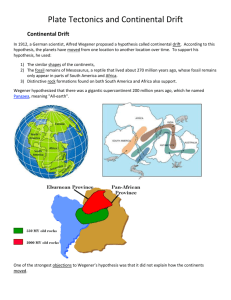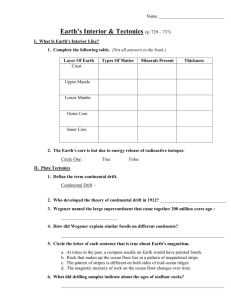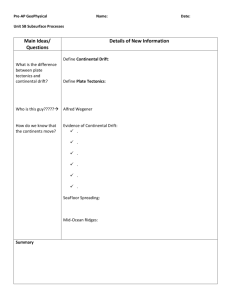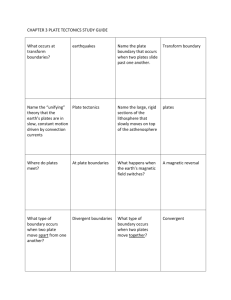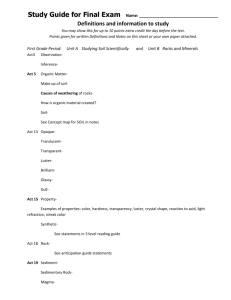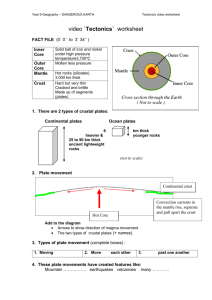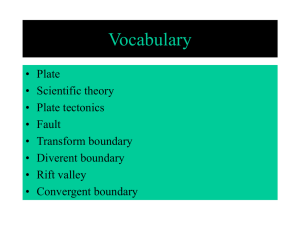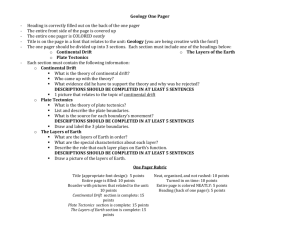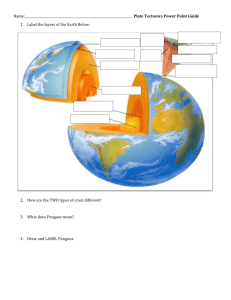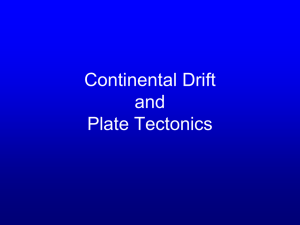Ch 4 Sec 1,2
advertisement
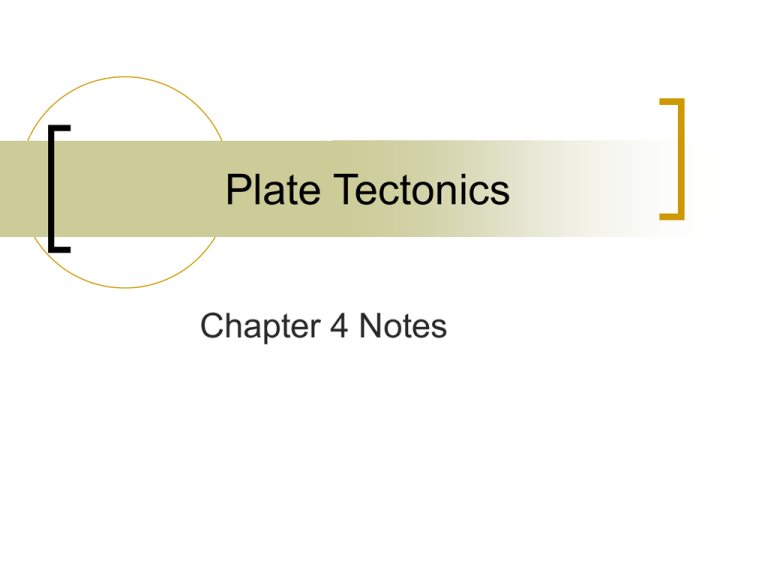
Plate Tectonics Chapter 4 Notes 4.1 Continental Drift In 1912, Alfred Wegener proposed a hypothesis called continental drift where the continents are constantly moving. All the continents once formed a large super continent that he called Pangaea which means “all lands” He said that there was one large ocean surrounding it called Panthalassa meaning “all seas” 4.1 Continental Drift As evidence, he found that the coastlines of continents lined up with one another. He also found fossils of the same animals, that cannot swim, on Africa and South America 4.1 Continental Drift Seafloor spreading also backs up the theory of continental drift. The rocks near the middle of the ocean floor are many million years younger than rocks on the continents. 4.1 Continental Drift There is a break in the plates at the mid-ocean ridge, where magma from deep in the earth wells up through the rift. The ocean floor moves away from the ridge and new rocks form as the magma cools. This is Seafloor Spreading. 4.2 Theory of Plate Tectonics The theory of plate tectonics not only describes continental movement but also gives an explanation of why and how continents move. Remember: 2 kinds of crust. Oceanic and Continental 4.2 Theory of Plate Tectonics Remember: Lithosphere is rigid upper mantle and the crust Remember: Asthenosphere is layer of rock that flows like putty There are about 30 plates that are moving around each other forming our Earth as we know it today. 4.2 Theory of Plate Tectonics Between those plates are boundaries. Two plates moving away from each other form a divergent boundary. The center of a mid-ocean ridge is a rift valley that is formed from a divergent boundary. 4.2 Theory of Plate Tectonics The direct collision of one plate with another makes a convergent boundary 3 types of collisions happen at convergent boundaries. 1st – Subduction where one plate goes under another. A deep ocean trench is usually found here. 4.2 Theory of Plate Tectonics 2nd – Two plates crash together and push each other up, crumpling and producing large mountain ranges. 3rd – Two oceanic plates where one goes under the other and melts forming volcanic islands on the other known as an island arc. 4.2 Theory of Plate Tectonics Another boundary is the transform boundary where two plates grind past each other. 4.2 Theory of Plate Tectonics Scientist think the plates are moving because of convection currents moving in the asthenosphere. This is where the hottest rock moves up and the cooler rocks fall towards the core.
